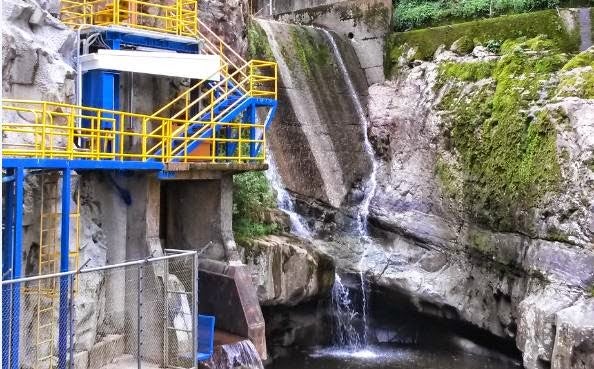By Carlos Echevarría*
Modernization of the Macho River hydroelectric plant in Costa Rica has created more than 300 direct jobs and will supply electricity to more than 228,000 homes.

Springing from the virgin forests of Cerro de la Muerte (Death Peak) in Costa Rica, crystal clear waters form a powerful outflow that creates the Macho River and are a source of energy for the residents of the Orosi River Valley, a region lush with vegetation and abundant wildlife on the Atlantic slope of the country.
As a child growing up in the región, Efraín Arce Segura often played along the banks of the Macho River trapping shrimp. In 1959, Efraín witnessed the commotion set off in his community by the construction of a hydroelectric plant. Like him, many of the inhabitants wondered how the river could generate light.
Despite Efraín’s bewilderment, the Macho River electric power production center forged ahead and built the plant, and for the last 50 years has supplied clean energy to Costa Rica.
With financing of the Inter-American Development Bank (IDB), the Costa Rican Electricity Institute (ICE) is working today to modernize this plant to increase its efficiency and generating capacity in order to guarantee Costa Ricans another 50 years of service from this energy source.
On the 10th anniversary of operation of the hydroelectric plant, Efráin, then 20 years of age, began working in the electricity generation division of the plant. At that time, the power plant which used waters from the Macho, Blanco and Pejibaye rivers had an installed capacity of 30 MW, or megawatts.
“The water is our principal companion, our friend, without the water we are nothing”, says Efraín of the Macho River, a watercourse that is not only the source of his work but also his home.
Five decades have passed, and now a $122-million project is underway to improve the use of the available water with the installation of new generators and improvements to the water intake structures, the reservoir and the electric substation.
Once this modernization is completed in 2015, the Macho River output will increase from 120 to 140 MW, a 17% hike, and electricity services will expand to reach more families, companies and industries which, in turn, will improve the quality of life for Costa Rican residents and allow ICE to advance towards its goal of delivering sustainable energy to more than 228,000 homes.
These engineering works have created direct employment for more than 300 people like Efraín and, in parallel to the modernization effort, schools and recreation and sports centers have been upgraded and sidewalks have been built.
“For us, it is very important to take care of the rivers and not pollute them because not only do they produce electricity, but also they are a source of life, their waters travel to a treatment plant and from there to San José where they supply potable water to the capital and all the inhabitants of the metropolitan area,” says Efraín.
The Río Macho plant is an example of development in harmony with nature, it protects the environment and mitigates impacts on biodiversity. It is a source of work and of life which, with the determined effort of ICE, of workers like Efraín and the support of the IDB will continue illuminating Costa Rica for another half century.
_____________________
This post is part of a blog series on development effectiveness featuring stories on learning and experiences from IDB projects and evaluations. To learn more about design, monitoring and evaluation of IDB projects visit deo.iadb.org.
*Carlos Echevarria is a Senior Regional Specialist in the IDB´s Energy Division. With more than 15 years of experience in the financial sector, he joined IDB in 2006 to lead the carbon finance activities carried out throught the Sustainable Energy and Climate Change Iniciative (SECCI). He has been responsible for structuring energy investment projects & programs in different sectoral areas (sustainable energy, oil & gas, energy efficiency, rural electrification) in Latin America and the Caribbean.


Leave a Reply